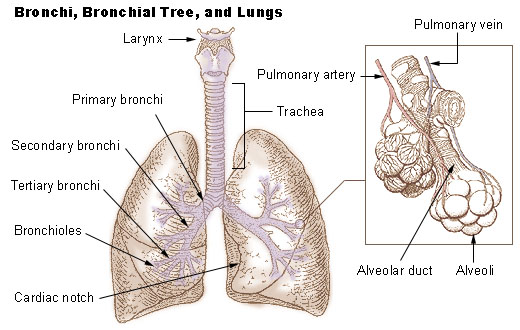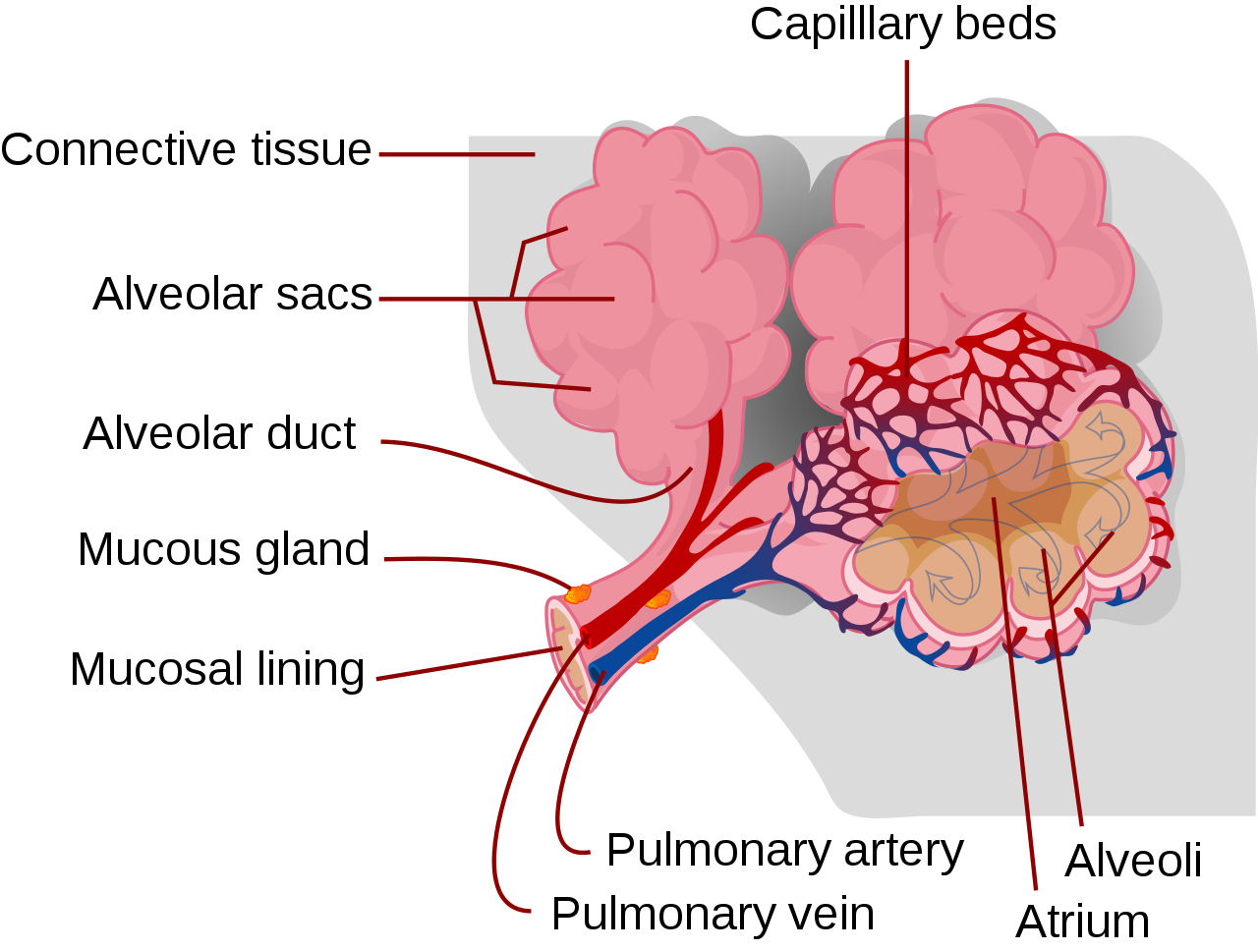More Anatomy of Respiratory System
Published .

When the intercostal muscles contract, the ribs are displaced outwardly (inhalation). The lungs are attached to the ribs and are stretched in all directions. The stretching of the lungs creates a vacuum (the air pressure inside the lungs becomes less than atmospheric air) and the air from outside the body is drawn into the lungs. The bottom of the lungs are stretched downward by the diaphragm. The diaphragm is a large muscle that separates the thoracic cavity (where the heart and lungs are located) from the abdominal cavity.

As you can see the air is drawn into the lungs by way of the layrnx and trachea. The trachea splits into smaller branches and those smaller branches split into smaller branches until the trachea and bronchi resemble an upside down tree.

At the end of the very long branches of the respiratory tree, there are structures called alveoli. Alveoli are also known as an air sac or air space is one of millions of hollow, distensible cup-shaped cavities in the lungs where oxygen is exchanged for carbon dioxide. Alveoli make up the functional tissue of the lungs known as the lung parenchyma, which takes up 90 percent of the total lung volume.

The alveoli are basically bags made of skin that air can pass through. Embedded on the surface of the alveoli are blood vessels. The blood vessels are microscopic and so small that gasses from the environment can pass through the tiny walls of the blood vessels. The tiny network of blood vessels are comprised of microscopic arteries (arterioles), veins (venules), and the in between blood vessel, the capillary. The air passes through this network of capillaries. The oxygen in the air is drawn into the capillary through the process of diffusion (the tendency for gasses and solutes to spread out and become evenly distributed).

The red blood cells being transported through the pulmonary capillaries to be re-oxygenated are carrying CO2 from the body. Since there is less CO2 in the atmosphere, diffusion carries the CO2 from red blood cell, through the microscopic blood vessel wall of the pulmonary capillaries and to the atmosphere by way of the bronchi, trachea, and pharynx. Oxygen is picked up by the red blood cell through diffusion as well. Since there is less oxygen in the deoxygenated red blood cells than in the atmosphere (the atmosphere has 21% oxygen concentration) oxygen passes through the blood vessel walls of the pulmonary capillary and attaches to a red blood cell.

